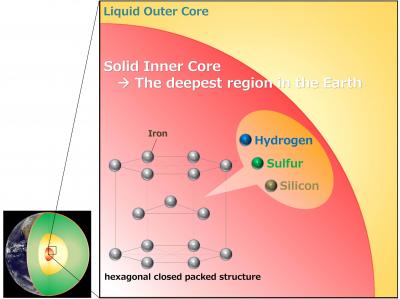About 85 percent of the Earth's core is made of iron, while nickel makes up an additional 10 percent. What is the final 5 percent? A variety of of light elements, it's been assumed, but no one knows.
The core, which is the deepest region of the Earth, is composed of a liquid outer core (2900~5100 km in depth) and solid inner core (5100~6400 km in depth). The core is one of the most important "final frontiers" for scientists looking to understand the history of Earth, and the conditions during its formation 4.5 billion years ago.
Experiments have consisted of building model cores containing different materials, and subjecting them to heat of up to 6,000C° and pressure 3.6 million times that at the surface of the planet. The researchers then measured the density and sound velocity, and concluded that the physical properties of the iron-alloy with those three elements are consistent with seismological observations in the real core.
 The solid inner core of the Earth and its possible light elements are shown. Credit: Tatsuya Sakamaki
The solid inner core of the Earth and its possible light elements are shown. Credit: Tatsuya Sakamaki
The new study suggests that possible candidates for the light elements are hydrogen, silicon and sulfur. So we may be one step closer to solving the mystery at the center of the Earth.